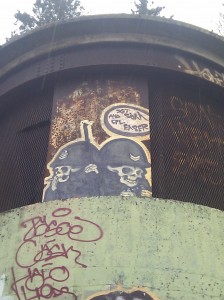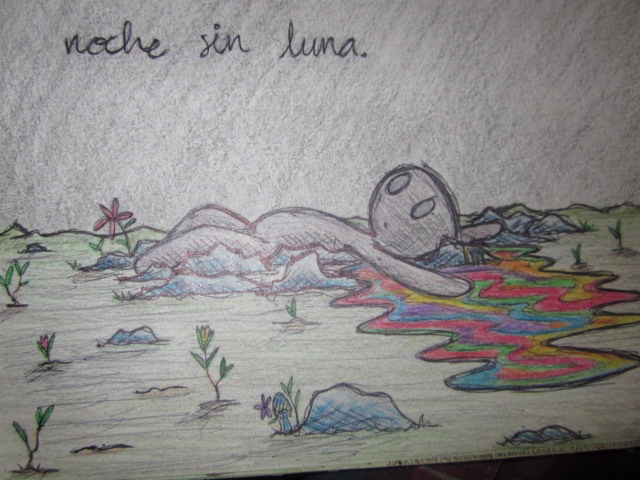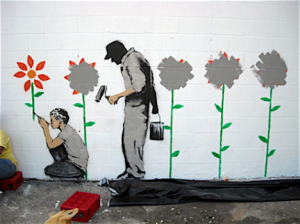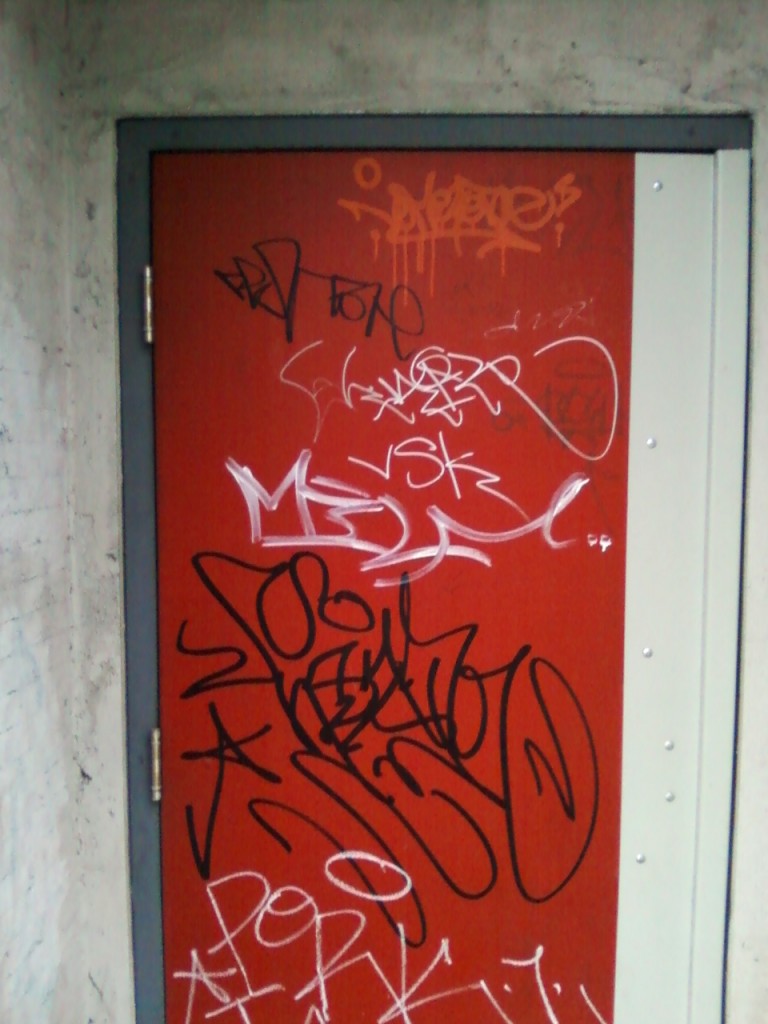
Graffiti is often portrayed in a negative light, a destructive act that is seen as an attack on private property and public space. Though there are alternative portrayals of graffiti as fitting into dimensions of alternative art, these are often limited to murals or graffiti forms that fit into culturally understood forms of visual aesthetics. Tagging, however, is almost universally condemned as destructive and visually displeasing.
Tagging is defined as “a name or brief message written typically with spray paint or paint markers in a highly visible location in the community” (Mac Gillivray, Curwen 2007: 358). Though many interpret it as an act of visual pollution, it is in fact an act of social litteracy, where taggers (often youth) situate themselves within a community of peers and communicate through the use of visual litteracy. It can be employed as an act of communication, with individuals reponding to each other through tags. Because taggers are not limited to specific geographical areas, the act of tagging as a tool for communication has the potential of transcending racial, socio-economic and political barriers, creating a liminal space that is, in a sense, open to, and accepting of, differences.
Finally, it is worth noting that one cannot truly appreciate graffiti while devaluating tagging, taking in consideration that tagging is an essential precursor to graffiti art. Through repetition and practice, taggers create a specific style and skills that becomes reconized within the community.
Isabelle Maurice-Hammond
Mac Gillivray, Laurie., Curwen, Margaret Sauceda. (2007). Tagging as a Social Litteracy Practice. Journal of Adolescent and Adult Litteracy. 50(5), 354-369.












